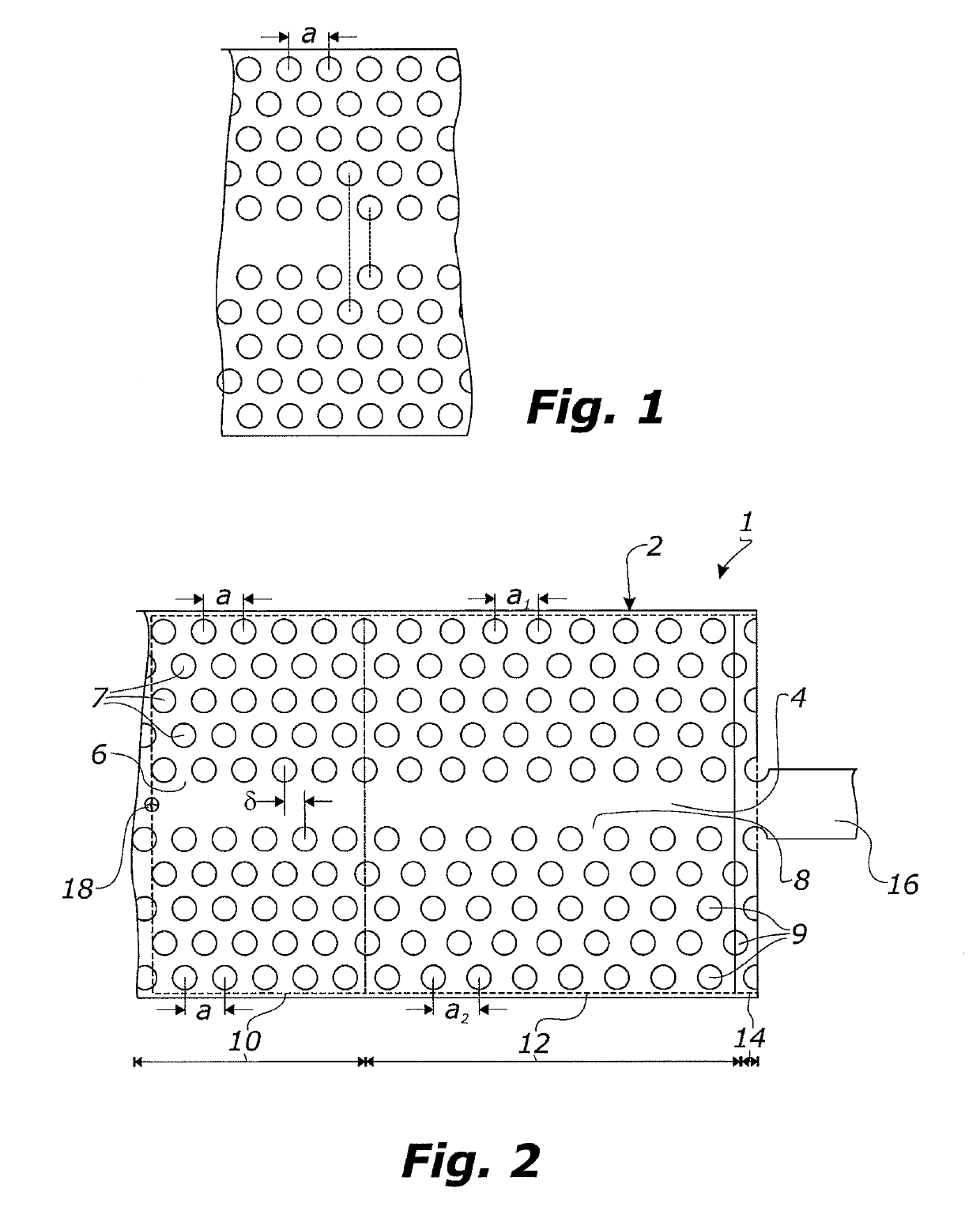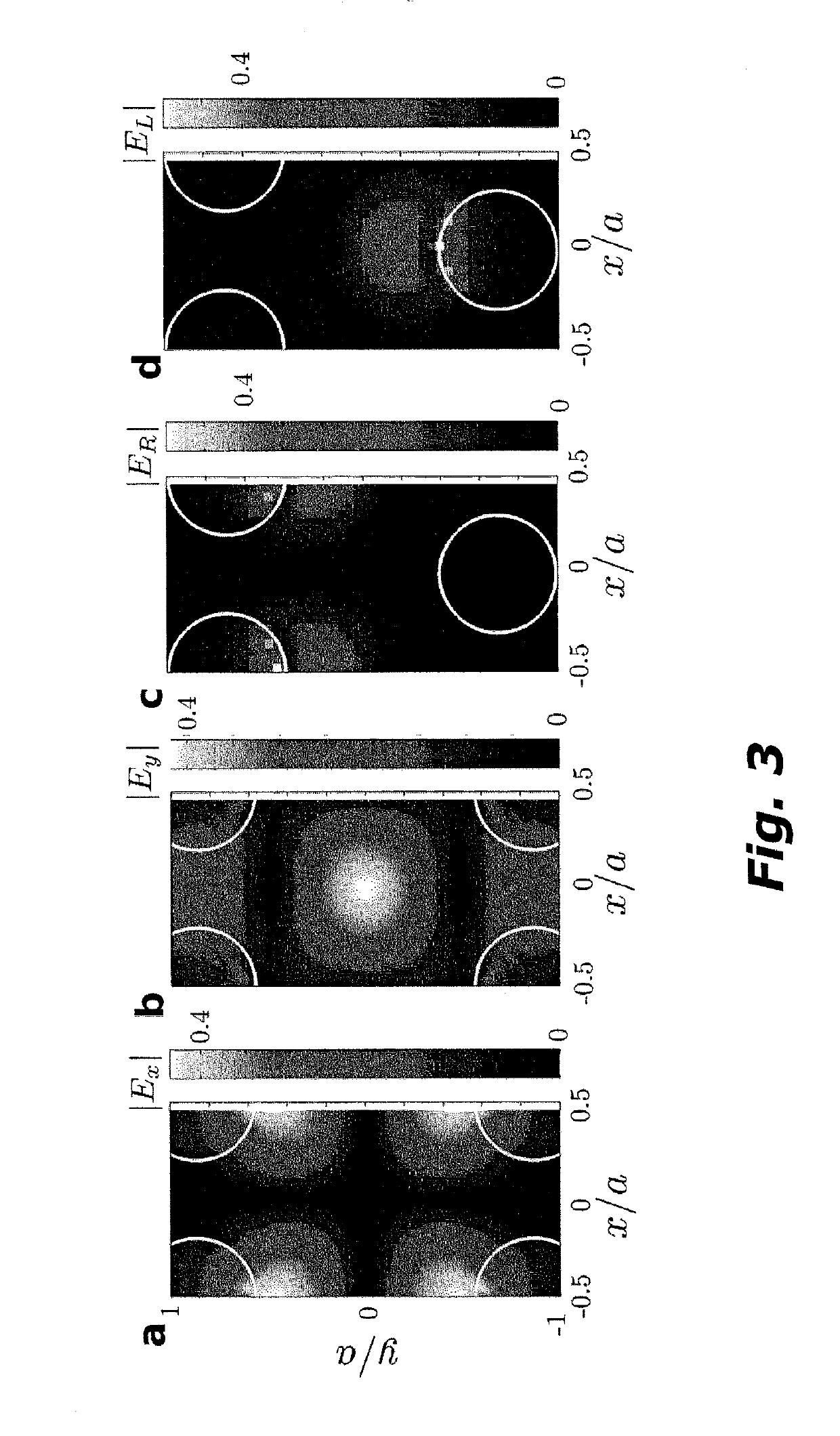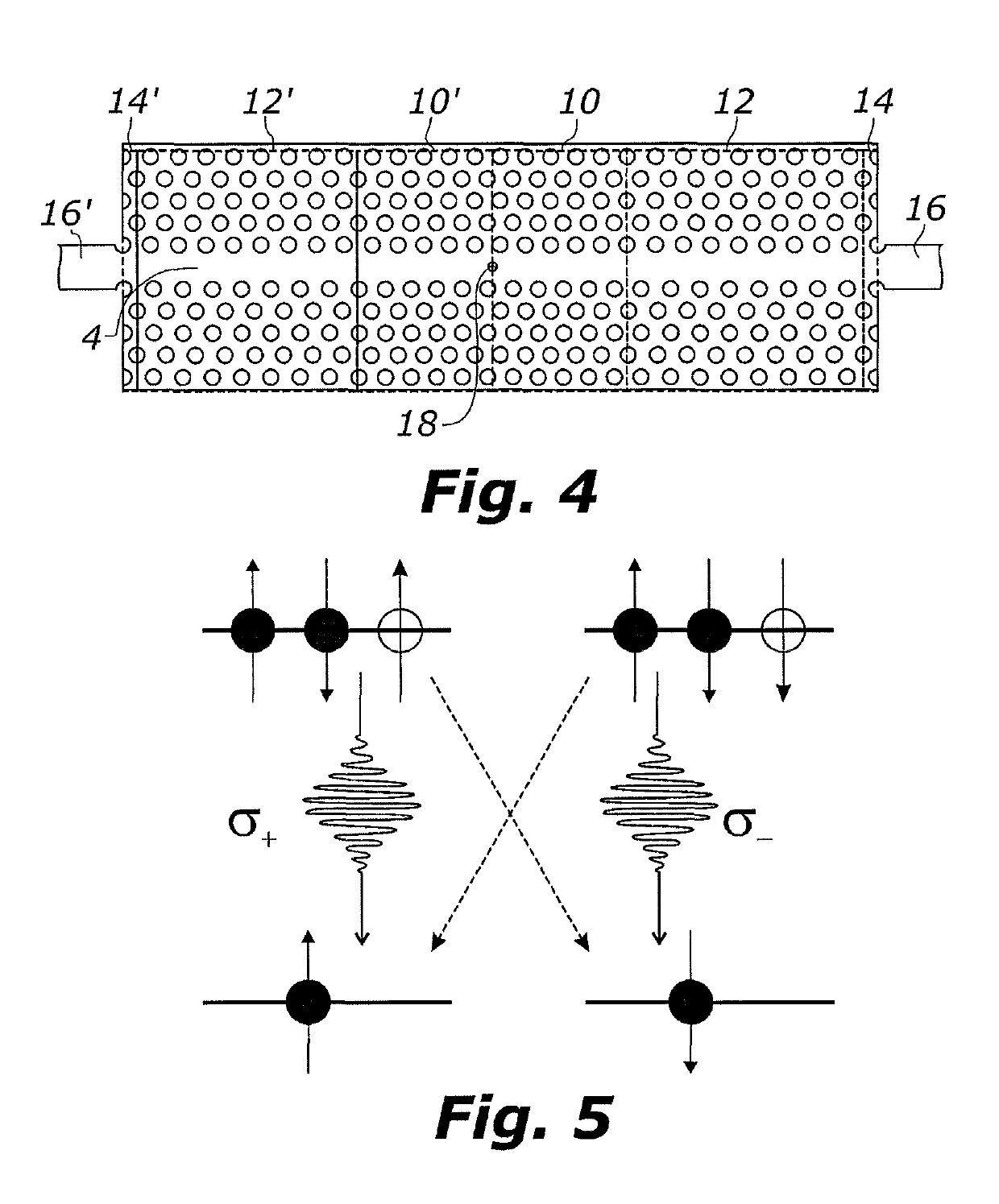Efficient spin-photon interface using glide-plane-symmetric waveguide
a waveguide and glide-plane technology, applied in the direction of electrical equipment, instruments, nanotechnology, etc., can solve the problem that the circularly polarized transition dipole moment emitter cannot efficiently couple to such waveguides, and achieve the effect of low loss and efficient coupling
- Summary
- Abstract
- Description
- Claims
- Application Information
AI Technical Summary
Benefits of technology
Problems solved by technology
Method used
Image
Examples
example 1
[0097]FIG. 7 illustrates a first optical device 101 implementing a planar waveguide 2 according to the invention, where FIG. 7c shows a Mach-Zehnder interferometer suggested for on-chip spin readout in the Heitler regime. The interaction with the quantum dot takes place in a section of the glide-plane-symmetric waveguide (GPW) 2 placed in path A. Path B includes a phase control, which is necessary to ensure that the interferometer is correctly balanced. FIG. 7a shows an external magnetic field, Bext, along the growth direction which splits the two circularly polarized transitions, denoted with dipoles σ+ and σ−. In addition to energetically splitting the two circular transitions, the external magnetic field suppresses the diagonal transitions denoted by the dashed arrows. FIG. 7b shows the phase and probability amplitude for a single photon forward-scattered in a GPW as a function of the directional β-factor. FIG. 7d shows the probabilities of a successful...
example 2
on-Demolition Measurement
[0102]Adding coherent control of the single electron spin qubit, allows us to create arbitrary superpositions of the two single electron ground-states, making additional applications attainable. Such control can be achieved both by optical methods and through in-plane oscillating magnetic fields, Bμw, created by a microwave source, which is shown schematically in FIG. 8a. Using this control a single-photon quantum non-demolition (QND) detector can be built by following methods known per se. Initialization of the spin qubit in the state |↑ can be done through optical spin pumping by driving the σ− transition. Next, a pi / 2-rotation of the spin qubit is carried out, making the transformations:
[0103]|↑〉→π / 212(|↑〉+|↓〉),and|↓〉→π / 212(-|↑〉+|↓〉).
which can be done by Bμw. A single photon on resonance with the Bμw transition, |kb, will only obtain a phase shift when the quantum dot is in the state |↑. After the single photon has past the interaction region, ...
example 3
oton Transistor and cNot Gate
[0107]In Example 1 it was shown that using an MZI, the single-spin ground state of a trion can be efficiently read out, and in Example 2 it was illustrated how a single-photon can be used to control the internal state of the quantum dot.
[0108]In this Example, we combine these two ideas into a single-photon transistor / switch, where a single gate photon controls the flow of subsequent photons. Again, a trion is used in an external magnetic field pointing along the growth direction. This is shown in FIG. 8a, where an external magnetic field, Bext, along the growth direction splits the two circularly polarized transitions, denoted with the dipoles moments σ+ and σ−. In addition to energetically splitting the two circular transitions the external magnetic field suppresses the diagonal transitions denoted by the dotted arrows. Coherent control of the spin qubit can be obtained through oscillating in-plane magnetic fields, generated by a microwave source on res...
PUM
 Login to View More
Login to View More Abstract
Description
Claims
Application Information
 Login to View More
Login to View More - R&D
- Intellectual Property
- Life Sciences
- Materials
- Tech Scout
- Unparalleled Data Quality
- Higher Quality Content
- 60% Fewer Hallucinations
Browse by: Latest US Patents, China's latest patents, Technical Efficacy Thesaurus, Application Domain, Technology Topic, Popular Technical Reports.
© 2025 PatSnap. All rights reserved.Legal|Privacy policy|Modern Slavery Act Transparency Statement|Sitemap|About US| Contact US: help@patsnap.com



